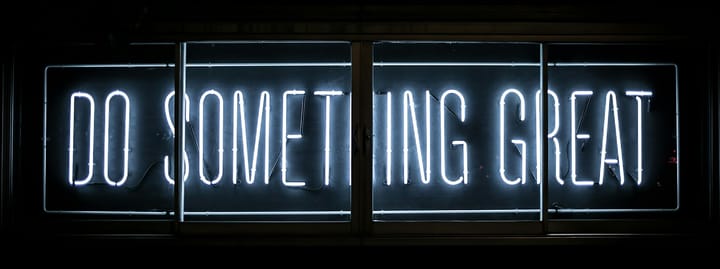Books That Actually Boost Creativity (Without Crystal Healing BS)
Creative block got you stuck in beige thinking? Books that unlock creative thinking without spiritual nonsense - battle-tested by someone allergic to manifestation mantras.
Creative block got you stuck in beige thinking?
You know you're capable of better ideas. More interesting solutions. Creative approaches that don't sound like everyone else's regurgitated advice.
But every creativity book sounds like it was written by someone who believes in crystal healing and thinks the universe conspires to help you find parking spots.
You don't need to "align your chakras" or "manifest your creative essence." You need practical tools that unlock the creative thinking that's already in your brain.
Here's what creativity gurus won't tell you: Creativity isn't magic. It's a skill with teachable techniques.
Books that actually boost creativity without spiritual nonsense from someone allergic to manifestation mantras. No vision boards or meditation required - just practical techniques that unlock creative thinking for skeptical minds.
Why Most Creativity Advice is Mental Junk Food
Their approach: "Get in touch with your inner artist and let creativity flow"
Your reality: You need creative solutions for real problems, not abstract self-expression
Their approach: "Remove all blocks and obstacles to unleash your natural creativity"
Your reality: Some constraints actually spark better creative solutions
Their approach: "Follow your passion and the ideas will come"
Your reality: You need creative thinking for work projects, not life-changing revelations
The truth: Creativity is a cognitive process you can learn and improve, not a mystical force you have to channel.
🎯 The Creative Block Reality Check
What Actually Kills Creative Thinking
Mental ruts: Using the same thinking patterns for every problem
Fear of stupid ideas: Self-censoring before ideas have a chance to develop
Information overload: Too much input, not enough processing time
Perfectionism paralysis: Needing the "perfect" idea before starting
Comparison trap: Seeing others' finished work and feeling unoriginal
The relief: These are technical problems with technical solutions.
📚 Books That Unlock Creative Thinking (No Crystals Required)
For Systematic Creativity: How to Generate Ideas on Demand
"A Technique for Producing Ideas" by James Webb Young
- What it teaches: 5-step systematic process for generating ideas
- Key insight: Ideas come from combining existing elements in new ways
- Practical application: Gather raw material → process unconsciously → eureka moment → refine
- Why it's not woo-woo: Written by advertising executive, tested on real business problems
- Real impact: Turned idea generation from waiting for inspiration to reliable process
"Thinkertoys" by Michael Michalko
- What it teaches: 30+ specific techniques for creative problem-solving
- Key insight: Different thinking techniques produce different types of solutions
- Practical application: Random word technique, idea box method, assumption reversals
- Why it's not woo-woo: Each technique includes step-by-step instructions and business examples
- Real impact: Like having a creativity toolkit for different types of problems
For Breaking Mental Patterns: How to Think Differently
"Lateral Thinking" by Edward de Bono
- What it teaches: How to deliberately escape normal thinking patterns
- Key insight: Logic is great for refining ideas, terrible for generating them
- Practical application: Random entry points, provocative operations, alternatives method
- Why it's not woo-woo: Created by medical doctor, used by major corporations
- Real impact: Learn to think around problems instead of through them
"The Art of Problem Solving" by Russell Ackoff
- What it teaches: How to dissolve problems by changing the system instead of solving them
- Key insight: The best solutions often make the original problem irrelevant
- Practical application: Problem redefinition, synthesis thinking, idealized design
- Why it's not woo-woo: Operations research professor with real-world case studies
- Real impact: Stop trying to solve unsolvable problems, start redesigning systems
For Innovation Under Constraints: How to Be Creative Within Limits
"Beautiful Constraint" by Adam Morgan & Mark Barden
- What it teaches: How constraints spark creativity instead of limiting it
- Key insight: Limitations force you to find creative solutions you wouldn't otherwise consider
- Practical application: Constraint-based thinking, resource scarcity as creativity trigger
- Why it's not woo-woo: Business strategy consultants with corporate case studies
- Real impact: Turn budget cuts and resource limitations into innovation opportunities
"The Innovator's Dilemma" by Clayton Christensen
- What it teaches: How breakthrough innovations come from unexpected directions
- Key insight: Disruptive innovation starts in markets that seem unimportant
- Practical application: Look for opportunities in "inferior" solutions, underserved markets
- Why it's not woo-woo: Harvard Business School research with extensive data
- Real impact: Stop trying to beat existing solutions, start creating new categories
For Creative Communication: How to Make Ideas Stick
"Made to Stick" by Chip Heath & Dan Heath
- What it teaches: Why some ideas survive and others die
- Key insight: Sticky ideas are simple, unexpected, concrete, credible, emotional, and story-driven
- Practical application: SUCCESs framework for communicating creative concepts
- Why it's not woo-woo: Social psychology research applied to business communication
- Real impact: Get your creative ideas heard and implemented
"The Art of Explanation" by Lee LeFever
- What it teaches: How to explain complex creative concepts simply
- Key insight: Understanding doesn't equal ability to explain clearly
- Practical application: Explanation planning, analogy development, context setting
- Why it's not woo-woo: Professional explainer with tested methodologies
- Real impact: Bridge the gap between your creative vision and others' understanding
For Creative Confidence: How to Trust Your Ideas
"Creative Confidence" by Tom Kelley & David Kelley
- What it teaches: How to overcome fear of creative judgment
- Key insight: Everyone is creative, but most people learn to hide it
- Practical application: Rapid prototyping, failing fast, iteration thinking
- Why it's not woo-woo: IDEO design methodology with real client examples
- Real impact: Stop waiting for perfect ideas, start testing imperfect ones
"The Runaway Species" by David Eagleman & Anthony Brandt
- What it teaches: How human creativity works from a neuroscience perspective
- Key insight: Creativity involves bending, breaking, and blending existing ideas
- Practical application: Systematic approaches to idea variation and combination
- Why it's not woo-woo: Neuroscientist + composer analyzing creativity scientifically
- Real impact: Understand the mechanics of creativity so you can deliberately practice them
⚡ How These Books Work Together (The Creativity Stack)
The Complete Creative Thinking System
Step 1: Problem Definition ("The Art of Problem Solving")
- Question whether you're solving the right problem
- Look for ways to dissolve the problem entirely
- Reframe constraints as creative opportunities
Step 2: Idea Generation ("A Technique for Producing Ideas" + "Thinkertoys")
- Use systematic techniques to generate multiple options
- Combine unrelated elements in new ways
- Apply lateral thinking to escape obvious solutions
Step 3: Innovation Focus ("Beautiful Constraint" + "The Innovator's Dilemma")
- Use limitations as creativity triggers
- Look for disruptive opportunities in underserved areas
- Turn resource constraints into innovation advantages
Step 4: Communication ("Made to Stick" + "The Art of Explanation")
- Make your ideas memorable and actionable
- Explain complex concepts simply
- Get buy-in for creative solutions
Step 5: Implementation ("Creative Confidence")
- Prototype quickly and cheaply
- Test ideas before perfecting them
- Build confidence through small creative wins
🛠️ Practical Creativity Techniques (From the Books)
Daily Creative Thinking Exercises
Random Word Technique (From "Lateral Thinking")
- Pick random word from dictionary
- Force connections between word and your problem
- Example: Problem = improve team meetings; Random word = bicycle → What if meetings had gears/speeds?
Assumption Reversal (From "Thinkertoys")
- List all assumptions about your problem
- Reverse each assumption
- Example: Assumption = customers want cheap products → Reversal = what if they want expensive products that save time?
Constraint Addition (From "Beautiful Constraint")
- Add artificial constraints to your problem
- Force solutions within tighter limits
- Example: Solve this with half the budget, in half the time, with half the people
Problem Redefinition (From "The Art of Problem Solving")
- Ask "What problem is this problem a symptom of?"
- Solve the meta-problem instead of the surface problem
- Example: Low employee engagement → Real problem might be unclear career paths
Weekly Creative Projects
Idea Combination Sessions
- Choose two unrelated industries/products/concepts
- Force connections between them
- Example: Fast food + financial planning = what would McDonald's-style financial advice look like?
Alternative Uses Brainstorming
- Pick common object
- Generate 50 alternative uses
- Apply this thinking to your actual creative challenges
Worst Idea Sessions
- Deliberately generate terrible solutions
- Find the kernel of insight in bad ideas
- Often leads to breakthrough solutions through reverse thinking
📅 Your 60-Day Creativity Upgrade Plan
Weeks 1-2: Foundation Building
- Read "A Technique for Producing Ideas" (short, dense)
- Practice the 5-step process on small problems
- Start keeping an idea journal
Weeks 3-4: Technique Expansion
- Read "Thinkertoys"
- Try 5 different creativity techniques
- Apply to one real work/life challenge
Weeks 5-6: Pattern Breaking
- Read "Lateral Thinking"
- Practice deliberate pattern interruption
- Challenge one assumption daily
Weeks 7-8: Application Focus
- Choose one book from remaining stack based on biggest need
- Apply techniques to significant creative challenge
- Track what works for your thinking style
🚫 Creativity Books to Skip (Unless You Like Spiritual Fluff)
"The Artist's Way": Morning pages might work, but it's wrapped in spiritual language
"Big Magic": Treats creativity like a mystical force instead of learnable skill
Most books about "unleashing creativity": Usually short on technique, long on inspiration
Vision board books: Visualization without action rarely produces results
"Follow your passion" books: Passion follows competence, not the other way around
The rule: Look for books with specific techniques, not abstract inspiration.
How to Actually Use These Books (Not Just Read Them)
The Creative Application Process
- Read actively: Take notes on specific techniques, not general insights
- Practice immediately: Try each technique on small problems first
- Adapt to your context: Modify techniques for your specific creative challenges
- Build a toolkit: Create your personal collection of go-to creativity methods
- Teach others: Explaining techniques deepens your understanding
Creating Your Creativity System
- Problem types: Match techniques to different types of creative challenges
- Time constraints: Quick techniques vs. deep exploration methods
- Work context: Professional creativity vs. personal creative projects
- Collaboration: Individual techniques vs. group creativity methods
- Measurement: Track which techniques produce results for you
Your Next Steps (Start This Week)
- Pick ONE book based on your biggest creativity challenge
- Read with technique focus - note specific methods, not general inspiration
- Practice one technique daily for one week on small problems
- Apply to real challenge after technique feels comfortable
- Build your creativity toolkit with methods that work for your brain
Emergency creativity kit: When you're completely stuck, try these techniques:
- Random word association with your problem
- List 10 ways your worst competitor would solve this
- Ask "How would a 5-year-old approach this?"
The Bottom Line
Creativity isn't magic. It's applied intelligence with systematic techniques.
You don't need to get in touch with your inner artist. You need practical tools that work for logical minds.
These books teach creativity like any other professional skill.
No vision boards, meditation retreats, or spiritual awakening required.
Start with technique, not inspiration. Results follow methodology.
Your creative breakthrough is waiting in your systematic approach, not your emotional state.
What's your biggest creative challenge? Get in touch to share about creative techniques that actually work - I'm collecting practical methods that produce results.
Ready to apply your new creative thinking? Check out our problem-solving tools or explore innovation strategies to put your creativity to work on real challenges.


